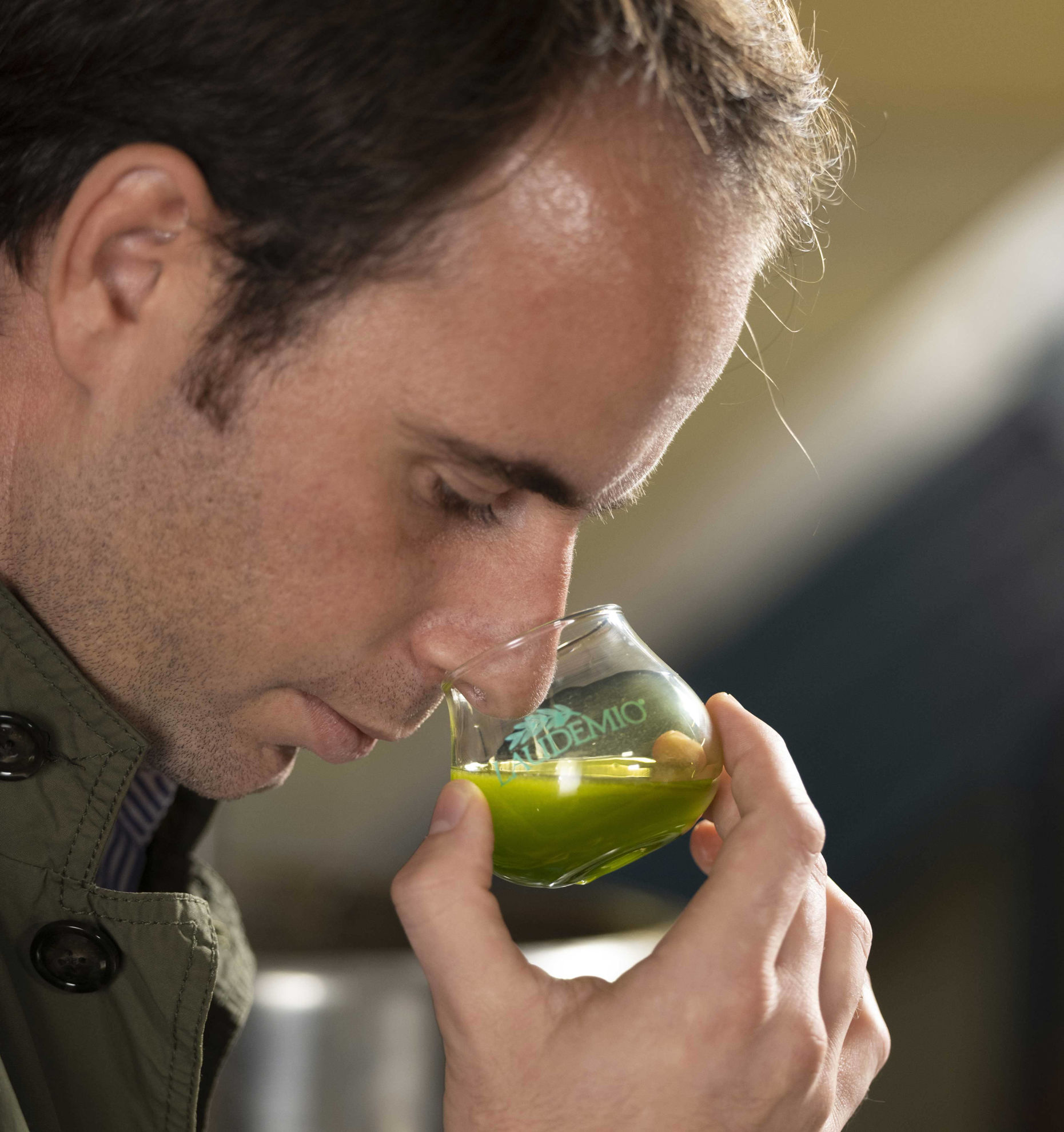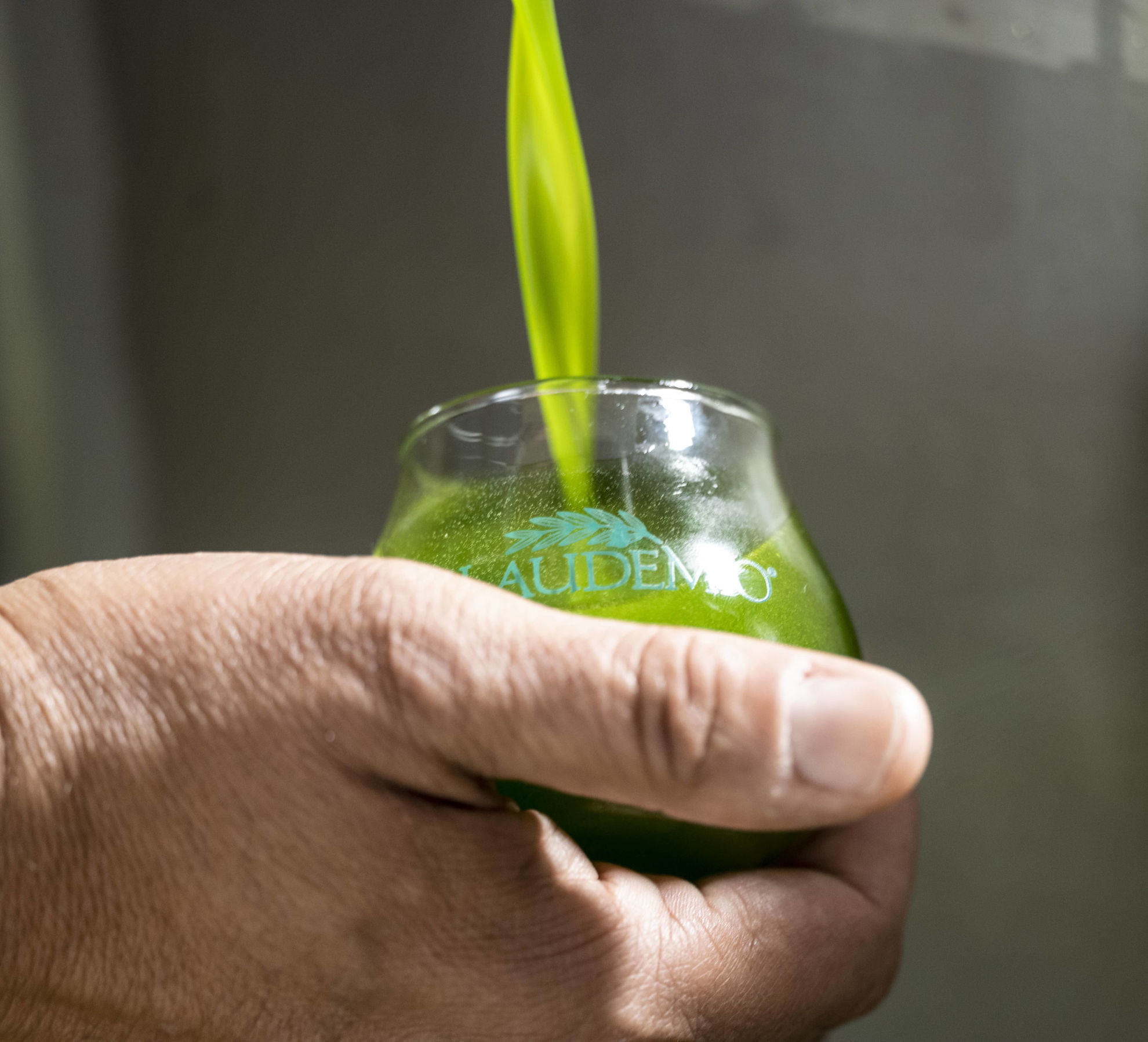
Tasting oil is a wonderful and unique experience. Unleash your creativity and let yourself be transported into the world of olive oil aromas. But how to taste olive oil? Alongside the advice of Matteo Frescobaldi, Brand Ambassador of Laudemio Frescobaldi, let's discover this quick guide on how to taste olive oil and learn how to find the best-tasting extra virgin olive oil!
How does extra virgin olive oil taste
You can distinguish between olive oils' strengths and weaknesses through a sensory journey. By trusting your senses and this guide, you will get all the answers to your most asked questions; for example, does extra virgin olive oil taste bitter? The strengths and weaknesses of extra virgin olive oil depend on various elements: the variety of olives, the methods of harvesting, and the geographical location. Nevertheless, in this case, it’s important to remember the three good attributes that are sought after when performing a taste test.
So, what does olive oil taste like? Let’s discover it and how to recognise every flaw.
- Extra virgin olive oil comes from natural fruit; therefore, it appears logical that it must have a fruity characteristic directly perceptible to your senses. Indeed, this is the most important quality of extra virgin olive oil.
- Green or blanched olives typically produce bitter olive oils. A slightly bitter taste is accepted; however, it should not be extreme; otherwise, you must categorise it as a weakness.
- Discovering how to taste olive oil, will also teach you that oil made from unripe olives tends to have an intense spicy sensation that you will sense throughout your mouth; thus, certain olive oils will have this characteristic.

Is extra virgin olive oil tastier than other olive oil
You must simultaneously recognise the flaws in olive oil to identify which one tastes better throughout the olive oil tasting. You should remember that you can solely classify oil as extra virgin if the oil lacks any of the subsequent defects. Suppose the oil has a slight rancid taste caused by exposure to light and heat or a metallic tinge from when the oil has been in contact with metal surfaces in the storage phase for an extended period. In that case, the oil cannot be considered extra virgin or even virgin, as it is likely low quality. You should also watch out for earthy tones; if the oil has this distinct taste, the olives were probably dirty during the harvest and not adequately cleaned.
Extra virgin olive oil taste test
Given that now we know how extra virgin olive oil is supposed to taste, we can move on to the next phase, the taste test. Before tasting the oil, we recommend tasters avoid drinking coffee, smoking and eating anything an hour before the degustation. In fact, professional tasters must clean their mouths with a slice of apple or sparkling water to prevent overlapping. Even though we are not all professional oil tasters, we can repeat the same process in the privacy of our own homes to discover which is the best tasting extra virgin olive oil.
Taste Test at home: Become an expert
Tasting olive oil is similar to tasting wine, and just like wine, olive oil has a variety of flavours and aromas. High quality extra virgin olive oil should taste of fresh herbs and fruit, with a range of profiles from delicate to complex. In contrast, low quality oil does not have these characteristics. It is important to note that the colour of the oil is not indicative of the quality of the product. For this reason, professionals use dark blue glasses or a dark blue glass so that they are not influenced by the colour of the oil in their evaluation.
There are two main phases when it comes to olive oil tasting. Although they may seem complicated, with this step-by-step guide, you will become an expert in differentiating high-quality extra virgin olive oil and regular olive oil.
Olfactory Assessment
This part of the test is critical; a correct assessment will show you whether or not the oil you are dealing with is of high quality. In this instance, the oil must be at about 27-28°. This is fundamental because it is the perfect temperature for your sense of smell to notice all the aromas. Does this seem complicated to you? Do not fret; when you have the oil-filled glass in your hands, you must gently swirl it around for 15 seconds. This way, your body heat will help the oil release all its scents and fragrances.
Taste Assessment
We previously learned that the most crucial characteristic of this type of oil is its fruity taste, as it indicates that well-harvested and healthy olives were used to produce the olive oil. With this in mind, let's learn how to perform the second and last phase of the extra virgin olive oil taste test. First, place the oil into your mouth, and without ingesting it, inhale air gently multiple times. Then, with great vigour, you must vaporise it in your mouth. This operation directly brings your taste buds into contact with the oil.
Last tips
When you have tested a genuine, high-quality extra virgin olive oil, the fruity taste should persist in your mouth. On the contrary, if you are left with a foul greasy feeling on your taste buds, you did not taste an authentic extra virgin olive oil. Finally, a bit of sparkling water, a piece of bread or a green apple is used between the tasting of two oils to cleanse the mouth and clear the senses.
Conclusion: tasting olive oil at the mill of Laudemio Frescobaldi
This guide on how to taste olive oil has taken you on an informative and sensory journey through the aromatic nuances and unique flavors that characterize high-quality extra virgin olive oil. Now is the time to turn your knowledge into a tangible experience. We invite you to visit our mill for an olive oil tasting in Tuscany, where you can fully immerse yourself in the production process and savor Laudemio Frescobaldi oil firsthand. Book now and be ready to live an unforgettable experience in a unique and enchanting setting!